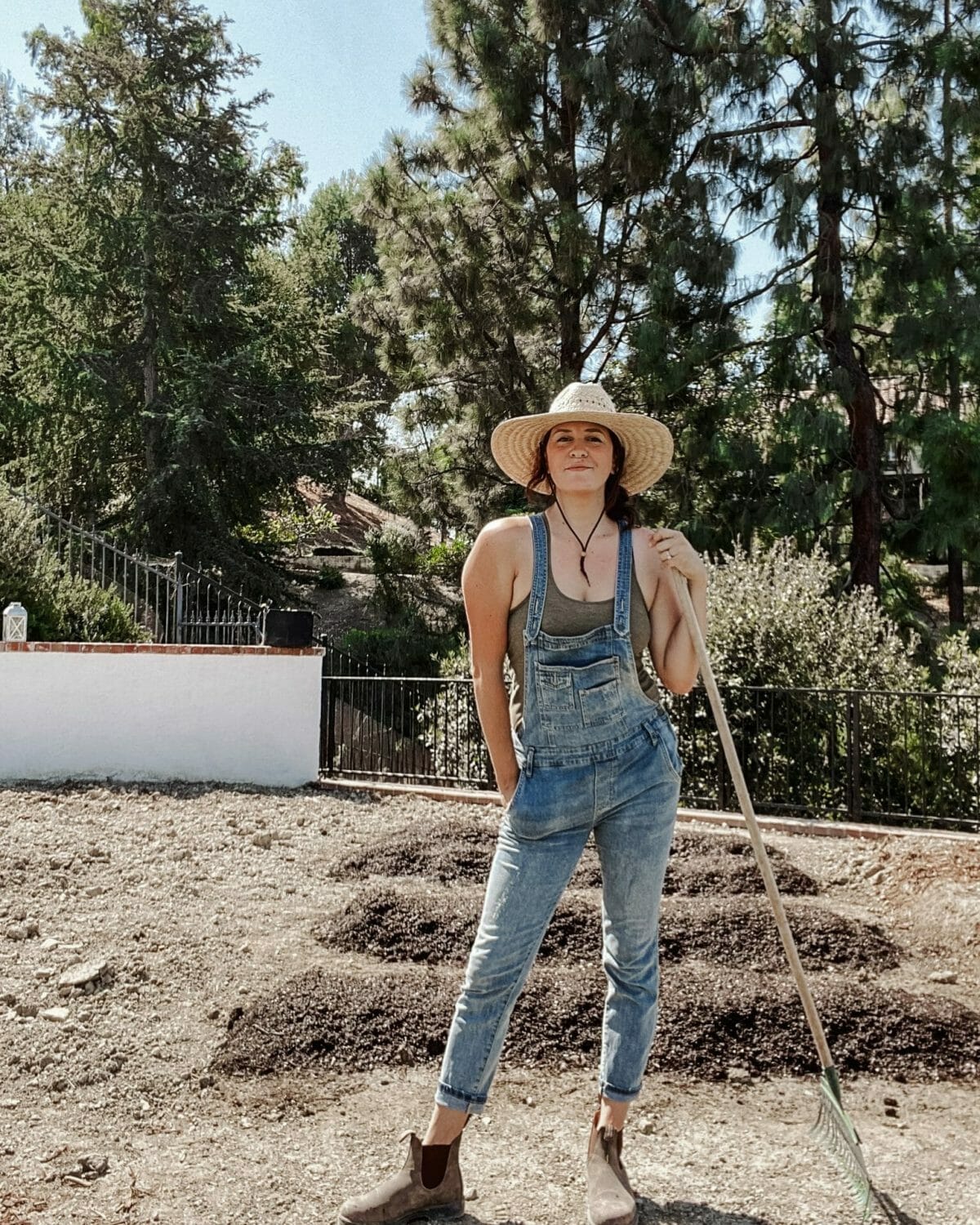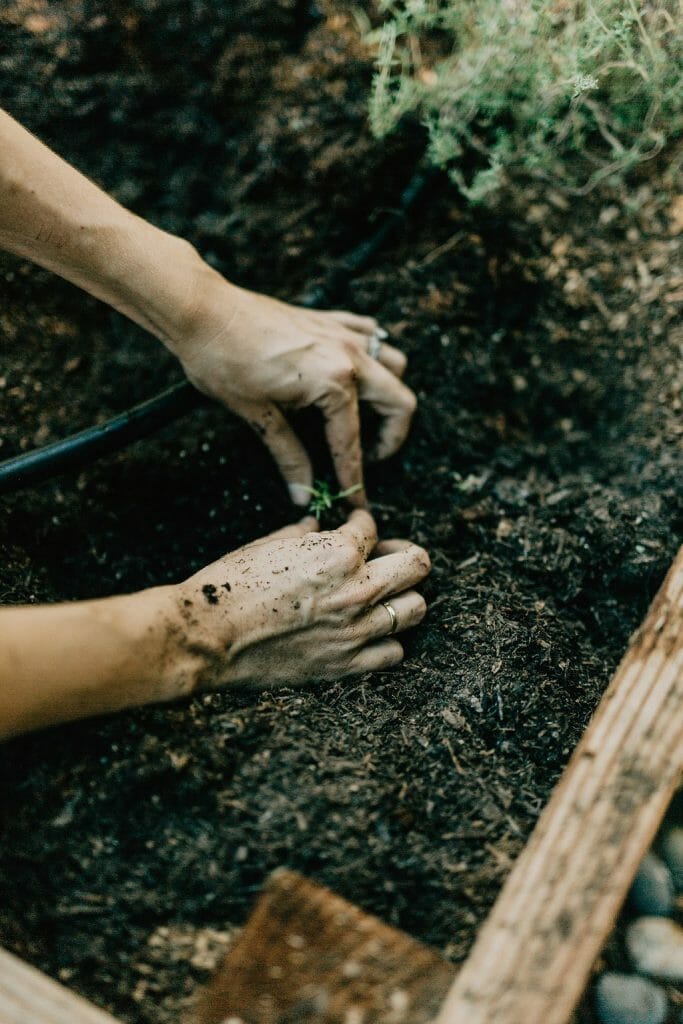
Regenerative Agriculture and Soil Health for the Home Gardener
I’m going to break it down for us laymen here, as understanding regenerative agriculture can feel complex. And for us everyday gardeners and average people, it can get overwhelming.
Regenerative agriculture is a new approach to farming that is beyond “organic”, and actually seeks to heal the earth. Due to a monocultural approach to farming (which is when we grow just one crop on thousands of acres), our soil has become depleted of nutrients and in fact, can contain incredibly harmful toxins due to the use of pesticides and herbicides.
The demand for food globally has required this method of farming, that’s what got us here. It’s due to that demand from the millions worldwide, as well as generational farming practices that are passed down that we got this far into it. I don’t know a single farmer that wants bad soil. Many farmers are working hard to rectify practices, get up to speed on regenerative agriculture, and change their approach.

So, we don’t need to go slamming all the farming operations. However, the rubber has met the road and we are seeing human health decline as a result.
Predictably, as the health of the soils and the plants that grow in them has diminished, chronic disease has gone epidemic. In the 1960s the entire US population had a chronic disease burden of 4%. Today, 46% of our children carry a chronic disease diagnosis. We have never imagined, let alone witnessed this level of chronic disease.
– Farmer’s Footprint
On a very large level, regenerative agriculture practices involve the following:
- No tillage
- Diverse cover crops
- In-farm fertility (no external nutrients)
- compost
- Holistic planned grazing
- No pesticides or synthetic fertilizers
- Multiple crop rotations
- Biochar
- Pollinator “highways”
*Also info from Farmer’s Footprint

So what does this mean to you and me? As an average everyday person, this means finding farms that use these practices, starting as local as you can. Signing up for their CSA programs, or shopping there as much as you can. You can ask vendors at your local farmer’s market, or do your research ahead of time on which farms practice regenerative agriculture.
For the home gardener, that means both action and inaction. It means investing in your soil health too. Avoiding fertilizers and absolutely zero chemical interventions. Work your land like a regenerative agriculture farmer – add compost and make compost. Use your little piece of dirt to be an example of getting soil back to optimum health, and watch your family’s lives change too.
What does healthy soil have in it?
Healthy soil is full of natural materials and life. They say that every square foot should have at least 10 worms in it. There should be a loamy texture, and be free of grit and man-made products. The common and traditional NPK fertilizer system is good for growing big calorie-rich vegetables, but like our friends that are using regenerative agriculture principles, there should not be a need for such things. When built and brought in, the magic soil combination that I strive for is 50% good quality topsoil, 30% compost, and the rest a mix of natural ingredients like worm castings, mushroom compost, aged manure, and maybe a little biochar.
To amend your existing soil in a way that supports regenerative agriculture approaches, adding compost and mulch and actual plant matter over and over and over again is a slow but steady method. The plants will help amend the soil too, drawing in beneficial insects and worms, etc. It all works together creating a soil web that is complex and v=invaluable.
Home gardening and growing your own food is a way to remove yourself from the problem and stop buying into/ supporting the companies that are not sharing in the values of regenerative agriculture and soil health.
While being proactive with our own little victory gardens sounds lovely, I realize that not all of us have enough space to fully grow all of our own produce. And just buying local can be limiting either geographically or in cost.
But here is what we can all do: choose other products that don’t contribute to the problem.
What we put on our bodies is just as important as what we put in them. Our skin is our largest organ after all!
Ways to support regenerative agriculture beyond food are:
- Skincare
- Clothing
- Toiletries
- Homegoods
It does take more effort to shop beyond Amazon and Target – believe me, it’s a process. It involves planning and often paying a higher short-term cost. My advice is to start out replacing one item at a time. Just bath products, then makeup, then t-shirts, and so on.
Clean skincare brand that I love:
The Kitchen Garden is run by a small-town mama who I got to know on Instagram – she makes ALL her own skincare from plants she either grows or sources from small gardens. It doesn’t get cleaner than that!
Clothing that is regenerative agriculture grown:
I actually fully learned about regenerative agriculture from Christy Dawn, a dress company along with a podcast episode from Goop. This all makes me sound quite into fashion, but I am so thrilled that the industry is promoting such god practices. The Goop podcast I listened to had Dr. Zach BUsh, M.D. on it who is wildly knowledgeable and one of my favorite resources on health.
Christy Dawn started an entirely new line of clothing and asked if I would be one of their stewards, spreading the world about regenerative agriculture, and to that I said: HECK YES. You can see me here on their site.
Christy Dawn is one of my favorite companies, and they use regenerative agriculture to grow their cotton. The dresses, as shown above, are spectacular and feel so light and natural on your skin.
They’ve adopted a farm in India and dedicated it to a 100% regenerative agriculture approach and have seen incredible life-altering changes to the business, and the farmers.
Patagonia is always on the forefront of these things, but now brands like Allbirds, and Reformation are doing this too!
For more information on regenerative agriculture, I love these sources:
There is a lot of information out there to check out, my favorite local regenerative ag source is The Ecology Center in San Juan Capistrano, CA. I urge you to do your own research and get familiar with this approach.
*This blog contains an affiliate link, which will not impact the cost of any items, but does compensate me if you shop. Thank you for your support!


